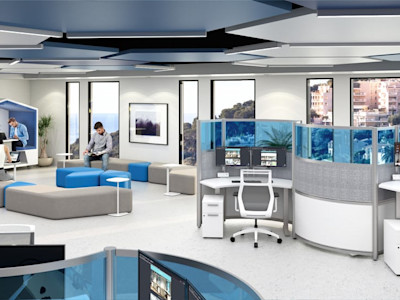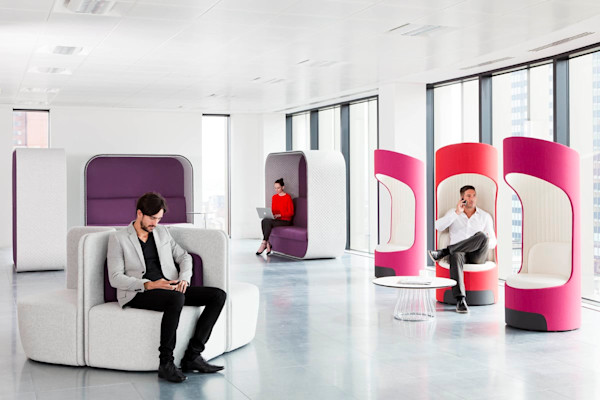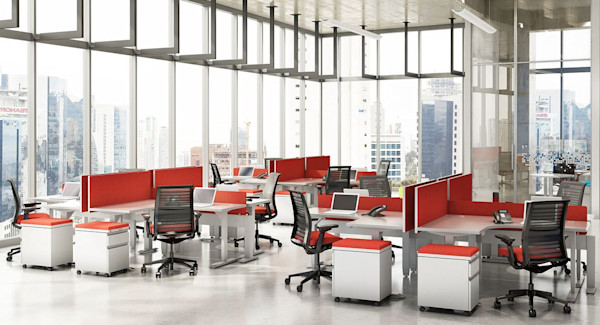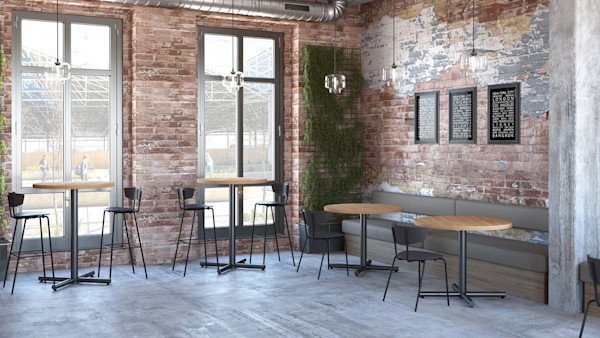5 Things Coworking Spaces Get Right

As companies continue to implement return-to-work initiatives, employees are realizing what’s important to them. Work-life balance, human interaction, and employee well-being are an important focus for those returning to work and the companies encouraging employees to return. Employees and companies are entering new territory. Do they have a right to demand a better working experience? More importantly, at what cost to the companies? Being forced to work remotely has taught us a lot. Companies were able to reduce costs associated with in-person work and employees became accustomed to working the way that best worked for them. However, both companies and employees lacked face-to-face interaction. That was one of the only things that was virtually impossible to replicate, but companies are finding creative ways to keep employees happy, operating costs down, and facilitate those face-to-face interactions that everyone can benefit from. The answers may come from a surprising place. Coworking spaces. Here are 5 things that coworking gets right and how to use those strategies in your return-to-work initiatives:
Community
Amenities
Space Utilization
Ergonomics
Atmosphere
What are Coworking Spaces?

>>Include coworking spaces in your traditional office<<
Coworking spaces create a sense of community. A space where like-minded people can come together and work alongside one another. Coworking spaces are usually strategically located making them easily accessible to many people. These spaces are usually designed to accommodate workers from different companies. While this isn’t a traditional setting or solution and it might come with its own set of hurdles, coworking spaces have huge upside. There is a lot that can be replicated in a traditional setting to satisfy everybody in and out of the office.
1. Community

>>Help your employees build a community in the office<<
Face-to-face and in-person interaction is nonexistent while employees work outside of the office. These interactions, whether collaborative or social, are necessary for our well-being as well as our performance and productivity. According to the SHRM Executive Network, building connections is essential to our well-being. Although the concept of coworking brings people from different companies and sometimes different industries, these spaces still foster interaction and add an element that can’t be found in a remote setting. There’s a lot to learn from this sense of community when implementing return-to-work initiatives. These forged communities don’t need to consist of strangers from different backgrounds or even companies, this sense of community can be encouraged within any office. Giving employees the opportunity to connect, socialize, and collaborate shouldn’t be reserved for coworking spaces.
2. Amenities

>>Provide employees with the amenities they need to succeed<<
As employees leave the comfort of their own homes, they might have a hard time replicating the comfort they’ve come to know so well. In any remote setting outside of the office, employees are basically on the hook for providing their own amenities. Remote workers might find themselves stepping away from the desk to stay active in their home gym. Or they might be able to take a power nap in the middle of the day or when they have a lull in their work. As they return to work, employees are finding how valuable those amenities are and are having difficulties trying to recreate this.
Consider what is most important to your employees, what they might be giving up as they return to work, and what might help make the transition back to the office easier.
Coworking spaces aim to accommodate employees from different backgrounds and working styles. This means that what employees need to be successful varies greatly. Coworking spaces might offer everything from gyms to daycare rooms, and recreation areas. Although it might not be feasible to create these exact spaces and make them a priority in a return-to-work initiative, there’s a lot to learn from these elements of coworking space. Consider what is most important to your employees, what they might be giving up as they return to work, and what might help make the transition back to the office easier.
3. Space Utilization

>>Get the most out of your office by optimizing your space<<
Because coworking spaces need to accommodate a wide array of people, the space they offer should support the needs of its occupants. Not everybody needs a meeting space or hyper-secluded areas, but someone might. Optimizing space is one of the most important parts of a coworking space.
Taking a play out of the coworking playbook can ensure that employees are working in a comfortable setting that benefits employee well-being.
In a coworking space, the space is the most valuable resource. Aside from the employees, this is no different than a traditional office. When you step into a coworking space you might find multi-use spaces, multifunctional furniture, and different types of workstations. This gives employees the chance to find and use the space that best fits their work. Optimizing space in a traditional office should be a focus when implementing return-to-work initiatives. It’s hard to expect someone to do their job without the necessary tools. To employees, their workspace is one of the most important tools they have.
4. Ergonomics

>>Make comfort a necessity rather than an afterthought<<
Occupants in a coworking space come and go and the space is used by many different people from many different backgrounds. In this type of setting, it’s not really possible to know who will be using the space next. How tall are they? Do they have inherent back problems? Do they perform better in an active setting? It’s hard to say. That is why ergonomics are a major aspect of coworking spaces. It’s important to provide workers with ergonomic furniture that provides comfort and functionality to almost all workers.
Optimizing space in a traditional office should be a focus when implementing return-to-work initiatives.
When developing a return to work initiative this should be a consideration. Remote workers were able to work in their ideal setting. As employees come back to work they can’t really bring their ideal setting with them. Taking this play out of the coworking playbook can ensure that employees are working in a comfortable setting that benefits employee well-being.
5. Atmosphere

>>Create a space where employees want to be<<
Our surroundings greatly affect us. As a result, the University of Minnesota, shares that our surroundings can affect our mood, interactions, and our behavior. Therefore, lighting, colors, and aesthetics can have a significant impact on our productivity and efficiency. Coworking spaces focus on creating an environment in which everyone can be successful. Using natural light and colors can greatly influence the mood of the people who use the space. People with different backgrounds, working styles, and ideas of comfort might occupy the same workspace. This makes the atmosphere an important part of coworking. Creating a warm and welcoming atmosphere for employees when they return to work should be a priority much like it is in a coworking space. This will help make the transition easier. As a result, you’ll be able to create a space that will welcome employees back into the office.
Take Initiative
Businesses can learn a lot from coworking spaces. Although your employees might not actually be using a coworking space, there are many aspects that can be incorporated into a more traditional office. Replicate these elements in your return-to-work initiatives and make the return to work a little bit easier. For tailored workspace solutions to enhance your return-to-work initiatives, contact StrongProject. Your workplace transformation starts now. Five Reasons Why More Companies Are Using Coworking Collaborative Furniture for Your Coworking Space



